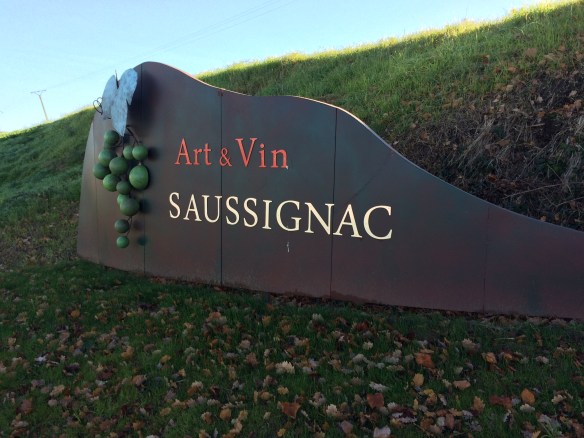Australia is home to a large diaspora of Greek speakers, both Greeks and Cypriots. It seems only natural that Australian wine would be welcome at a fine dining event in Paphos, Cyprus.
The Don Carlo Italian restaurant is the location chosen by the organizers, George Kassianos and Sarah Coyne.
- Don Carlo Restaurant, Paphos, Cyprus
- Don Carlo Restaurant, Paphos, Cyprus
This restaurant is in an elegantly restored Paphos town house with soaring ceilings, original black and white tiled floor entrance and classically beautiful front door. The cool eggshell blue of the walls feels appropriate for this space.
The four-course meal is paired with three wines from Torbreck Vintners in the Barossa Valley, South Australia, not far, in Australian terms, from the state capital, Adelaide.
Torbreck Vintners – Barossa Valley are represented by Sacha Timaeus, Export Manager and the wine importer from Nicosia, Nicolas Yiannakas of My Vine Merchants. They are introduced to the dinner guests by George Kassianos, a familiar figure on the Cyprus wine scene and President of the Cyprus Sommeliers Association.
Sacha describes the Torbreck Vintners operation, its history and vineyards, as well as the wines for the evening. He and Nicolas circulate among the tables throughout the dinner and answer questions about the wines.
Torbreck Vintners have been operating since 1994 and is committed to creating exceptional Rhône style red and white wines. Multi-generational growers, whose ancestors arrived nearly two centuries ago are the backbone of the Torbreck winemaking aspirations. It’s worth looking at the Torbreck website and reading the description of the operation as described by Pete Knight, Proprietor.
Here’s the amazing menu and wine pairing list from the dinner. I’ve added the alcohol level in parenthesis.
Grilled Curved Calamari served with a Grain Mustard Citrus Dressing with a Pink Grapefruit Zest Marmalade with Butter Poached Fennel and an Ink Tapioca Cracker
2022 Torbreck, Woodcutter’s Semillon, Barossa Valley, Australia (alc.13.0% vol)
———-
Duck breast with a light Berry & Honey Pepper Sauce Pumpkin Purée
infused with Star Anise
2022 Torbreck Cuvée Juveniles, Barossa Valley, Australia (alc.14.5% vol)
(47% Grenache, 32% Mataro, 10% Carignan, 9% Counoise, 2% Shiraz)
*******
Lamb Carre grilled with a Provencal Herb Crust with
slow-cooked Baby Potatoes in Garlic & Thyme
& Glazed Baby Carrots & Snow Peas
Served with a Rich Wine and Thyme Sauce
2020 Torbreck, Woodcutter’s Shiraz, Barossa Valley, Australia (alc.15% vol)
*******
- Torbreck Vintners Sémillon 2022
- Torbreck Vintners 2020 Grenache blend 2020
- Torbreck Vintners 2021 Shiraz
Panna Cotta with Red Fruits & Roasted Hazelnuts
********
We really enjoy the evening at the Don Carlo Restaurant. Apart from the elegant and friendly ambience with excellent service, the food and wine pairing brought out the best in both the wines and the food choices.
The Barossa Valley is known for its fine wines. The area was settled in the middle of the 19th century by Silesian settlers and there are 175 years of Silesian and English commitment to winemaking and grape-growing. Many of the vines were planted in the mid to late 19th century and were not affected by the phylloxera vineyard disease that was so ruinous for many vineyards in Europe. In the hot Mediterranean climate of the Barossa Valley bottom, the vines produce outstanding Shiraz, Grenache, Mataro wines. Classic Barossa Shiraz is full-bodied, spicy, earthy and develops rich aromas as it ages. We experience these rich and expressive wines with the duck and lamb dishes. On the cooler surrounding hills, the vineyards produce delicious medium bodied white wines, dry with lime-citrus fruit tones as we experience with the Sémillon, which is brilliantly paired with the Calamari.
First among equals for me with this food and wine pairing was the Sémillon with the calamari. Sémillon is typically one of the two wines blended in varying percentages in a Bordeaux White and I’ve experienced both the Sauvignon Blanc forward blend as well as the Sémillon forward blend. The Sémillon forward blend is best with white meat/chicken dishes as it is less acidic than Sauvignon Blanc. It makes sense to me that the Sémillon single varietal in this Barossa Sémillon would be so good with the Calamari, which is essentially a white meat. The calamari dish with all the trimmings as described is delicious.
We enjoy the duck breast paired with the Grenache blend. For my taste, thin slices of the duck breast would have been preferable to the thick portion served. This particular wine blend heavily weighted with Grenache, the classic Spanish grape found in Rioja, opened up with the spicy, peppery notes that are enjoyed in Grenache wines.
The lamb cutlets are « exceptional « in our view. Juicy, sweet and cooked to pink perfection. The 100% Shiraz is a great pairing choice. Shiraz is thought to be one of the oldest grape varieties and the most widely planted variety in Australia, where it can cope with the hot climate. Hot climate Shiraz is full bodied as we experience, typically with high alcohol level – 15% in this instance yet soft tannins so very drinkable. My preference is for a lesser alcohol level than 15%, so one just has to be aware of that percentage while enjoying the wine!
The meal concludes with one of our favourite puddings: Panna Cotta embellished with red fruits, hazelnuts and a chocolate leaf!
- Panna Cotta pudding with fruit, hazelnuts and chocolate leaf!
À successful evening of elegance, service, high quality food paired with very good wines. A return visit to the restaurant will definitely be in order!
Bon appétit!
Elizabethsvines
References : Torbreck Vintners: Torbreck.com
Don Carlo Italian Restaurant: restaurant@doncarlo.cy










































































































































































































































































































































